| Reviews & Columns |
|
Reviews DVD TV on DVD Blu-ray 4K UHD International DVDs In Theaters Reviews by Studio Video Games Features Collector Series DVDs Easter Egg Database Interviews DVD Talk Radio Feature Articles Columns Anime Talk DVD Savant Horror DVDs The M.O.D. Squad Art House HD Talk Silent DVD
|
DVD Talk Forum |
|
|
| Resources |
|
DVD Price Search Customer Service #'s RCE Info Links |
|
Columns
|
|
|
How to Look at a Painting
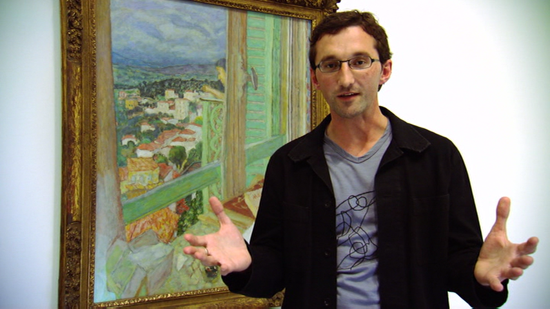
The TV Series:
The New Zealand-produced television series How to Look at a Painting turns the stodgy old idea of "art appreciation" on its head. In twelve frenetic, tightly edited episodes, young host Justin Paton guides viewers though different styles of painting, interviewing artists and dealers and offering his own perspective on why art and paintings matter in the 21st century, when there are so many newer, shinier things vying for our attention.
How to Look at a Painting is presented in affable fashion by Paton, the senior curator at New Zealand's Christchurch Gallery of Art (according to the back of the DVD package, he's since moved on to curating at Australia's Art Gallery New South Wales). Adapting from a same-titled book he wrote, Paton serves as a knowledgeable, quirky guide to the current artists and movements he feels best represent the principal tenets of painting.
Throughout each of How to Look at a Painting's twelve half-hour episodes, Paton discusses and interviews a lot of New Zealand-based artists whose work fits under the theme of that particular installment. Although the show seems determined to be less about the art itself than Paton's hipster-dude impressions of it, it's actually a valuable look at current artists and what drives them to create. The fact that many of the people profiled are New Zealanders unfamiliar to people in the U.S. makes it a little more valuable than the usual instructional fare. If Paton's narration seems kind of basic and geared towards a younger audience, he does get some great insights on what drives contemporary artists like Judy Millar (profiled in episode 4), an abstract painter whose bold, DeKooning-like installation pieces graced a recent edition of the Venice Biennale. With the exception of the first episode (which centers on Paton's own background and how his suburban New Zealand family shaped his own perceptions on art), every How to Look at a Painting shares the works and philosophies of at least a couple of fantastic artists whose work is largely unknown outside the Australia/New Zealand region.
If there was one complaint I'd have about How to Look at a Painting - and this is a big complaint - it's that the show relies too much on Paton (who, although likable enough, oozes smarm). The constant use of tired quick-edits, distracting music and needless sound effects also diminishes the show's impact. Paton spends a good amount of time stressing that the neutral setting of a museum or gallery is essential to commanding the viewer's full attention, a message dampened with constant fidgety editing and music. If art is truly meant to engage a viewer's full attention, why bother dressing it up with faux-MTV flash?
How to Look at a Painting is structured so that each episode delves into a single subject:
- 1. …And Discover a New World The primal power of art to connect people to their own past is explored, with Paton discussing how he ended up in his profession.
- 2. …Of the Body Paton explored the function of the nude body as subject in this provocative episode, highlighted by a monumental painting rendering a Madonna-like figure with porn-star curves.
- 3. …Of a Place Landscape painting in the 21st century, where capturing the essence of a place takes precedence over strict representation, gets play in a half-hour that spotlights a few interesting New Zealand artists.
- 4. …And Connect the Old and New Paton ventures to Venice, Italy, in this segment delving into contemporary artists' desire to use their work to bridge the old and new.
- 5. …Of a Face This episode, focusing on portraiture and how it stands in this digital snapshot-obsessed age, contains some of the most eccentric, fascinating stuff in the series (the man who paints deliberately ugly, exaggerated faces, for instance).
- 6. …And Take a Leap of Faith Offering thought-provoking ideas on religion's place in art, in a time when it's not imposed upon by big churches and wealthy patrons. Paton mostly sticks with the Euro-centric, Christian p.o.v., making for a frustratingly narrow-minded piece.
- 7. …Of Nothing The appeal of abstraction is thoughtfully explained in this segment, which contains several interesting interviews with modern New Zealand painters making evocative pieces that go against the representational grain.
- 8. …That Wants to Change the World Art as a force for political statement and propaganda is delved into here. This one contains several fascinating artists, although Paton also includes an artist whose caustic statements are hidden in obsessively neat abstractions.
- 9. …That Doesn't Look Like a Painting As seen in this episode, paintings don't have to be limited to the stretched-canvas-in-a-frame variety. The crucial context of viewing art is illustrated in a local mural located next to an unappealing, bustling gas station.
- 10. …In a Museum The challenge of museums and galleries providing an intimate experience while mounting ever-larger touring shows to bring in revenue is generously covered in this installment (really, how often does one see a TV show addressing this subject?).
- 11. …And Start a Collection How does an ordinary guy or gal become an art collector? As Paton explains in this episode, it's a surprisingly easy and affordable thing to do.
- 12. …On Your Own What's the function of galleries in today's attention-starved, fast-paced environment? The subject seems a bit glossed-over in this episode, although Paton's going to London offers glimpses at some different, intriguing artwork.
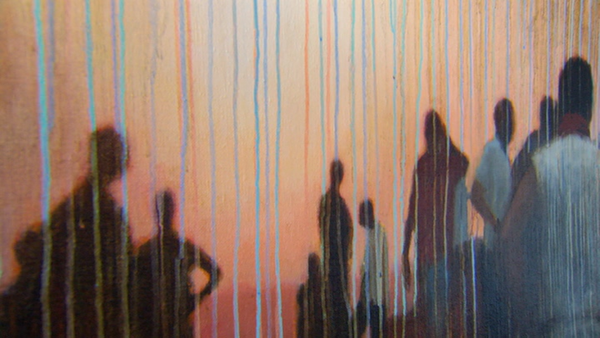
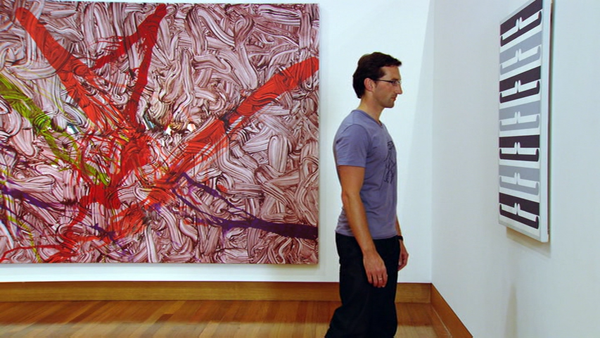
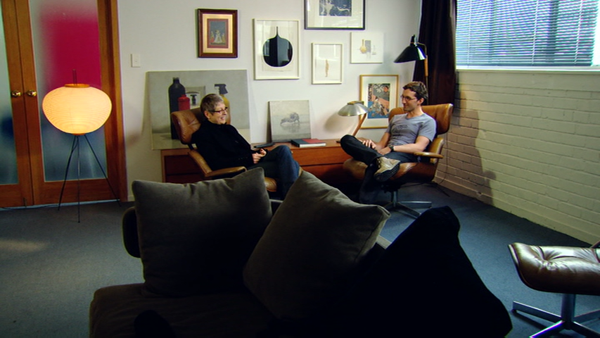
The DVD:
Video:
Athena's home video edition of How to Look at a Painting sports a sharp, good-quality picture in 16:9 widescreen. The amped-up, super-saturated color on this digitally-photographed image looks a bit cartoonish at times, where a more natural look would have been more appropriate. Other than that, it's a pleasant looking series that doesn't skimp on detail. When paintings are shown, it's usually a nice higher-resolution scanned image that gets in deep on textures and details, which is crucial for a show like this.
Audio:
The stereo soundtrack mixes in the music at a loudness level equal to Paton's narration and interviews, but otherwise it's a good, basically blemish-free track. Optional English SDH subtitles are provided on all 12 episodes.
Extras:
The set's second disc includes a worthwhile 62-minute program, What Is Beauty?, which covers territory similar to Paton's series - only in a more satisfying, straightforward way. In this 2009 BBC-produced documentary, British writer and artist Matthew Collings breaks down the elements of beauty into about a dozen key points, illustrating his ideas with a signature piece of art (the segment on Surprise, for example, uses a painting by French surrealist Rene Magritte). A 12-page Booklet contains an interview with Paton, along with capsule definitions of various art movements throughout history. Text-only Artist Profiles on each disc, which only cover the well-known historical artists referred to in the series, round out the extras.
Final Thoughts:
Can painting survive in the 21st century? The art-appreciating series How to Look at a Painting answers that question with an unequivocal, flashy "yes." Host Justin Paton makes this New Zealand-produced series concise and accessible, although his ideas get buried under frenetic editing and hackneyed music/sound effects (yep, even the old "record scratch" effect). Not for everybody, although teachers seeking something provocative for a high school-level curriculum might want to give it a go. Rent It.
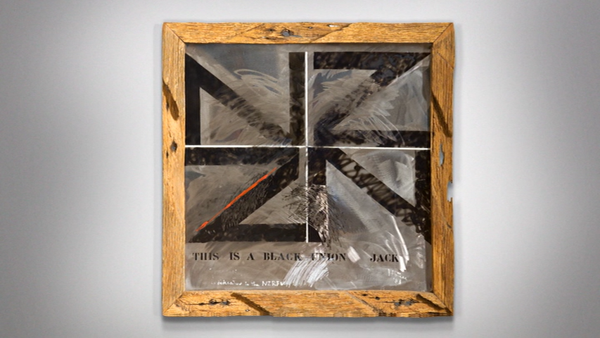
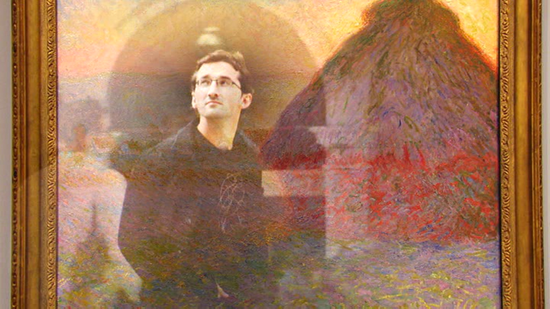
Matt Hinrichs is a designer, artist, film critic and jack-of-all-trades in Phoenix, Arizona. Since 2000, he has been blogging at Scrubbles.net. 4 Color Cowboy is his repository of Western-kitsch imagery, while other films he's experienced are logged at Letterboxd. He also welcomes friends on Twitter @4colorcowboy.
|
| Popular Reviews |
| Sponsored Links |
|
|
| Sponsored Links |
|
|
| Release List | Reviews | Shop | Newsletter | Forum | DVD Giveaways | Blu-Ray | Advertise |
|
Copyright 2024 DVDTalk.com All Rights Reserved. Legal Info, Privacy Policy, Terms of Use,
Manage Preferences,
Your Privacy Choices | |||||||













